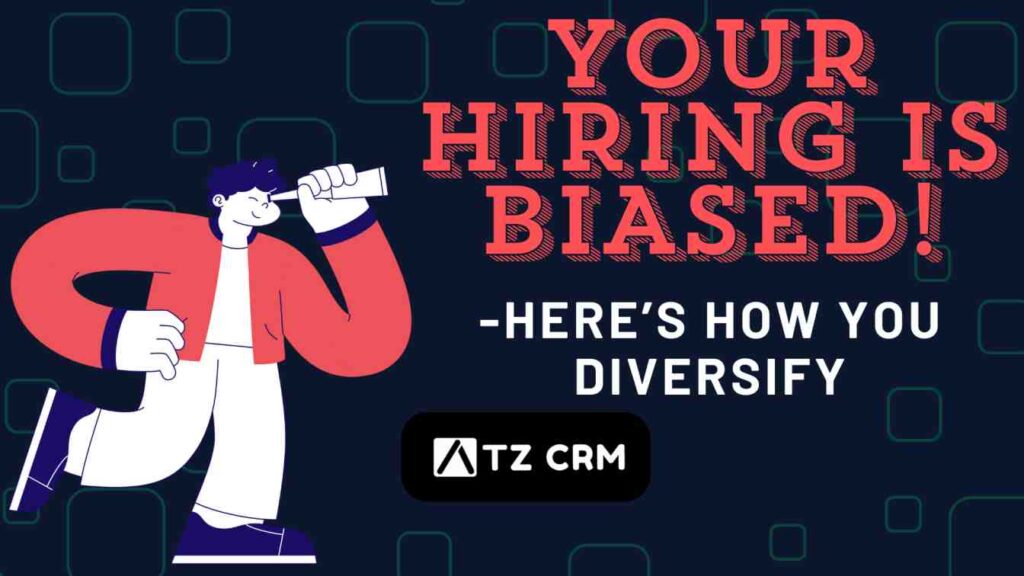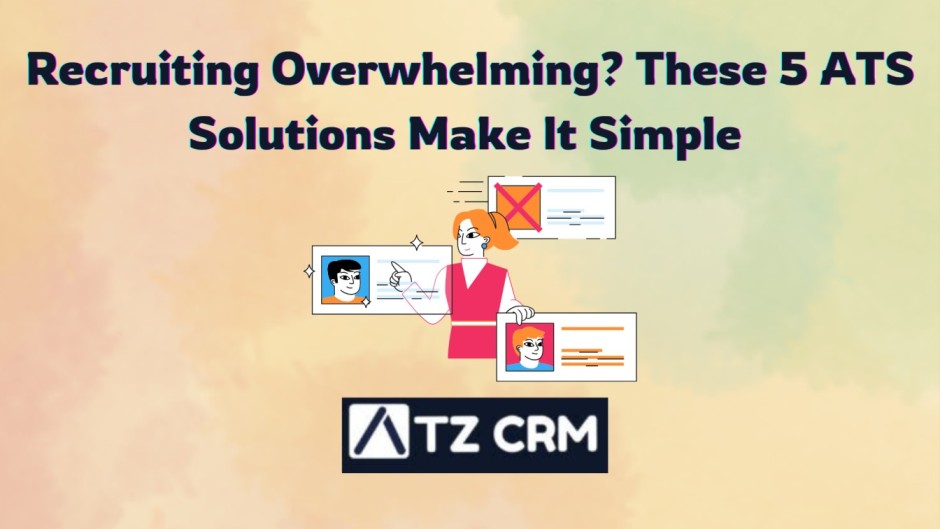Think you’re hiring the best talent? Think again—unconscious bias might be costing you top candidates before they even get a fair shot.
Hiring the right candidate isn’t just about finding someone with the best resume—it’s about creating a fair, unbiased process that allows every qualified applicant an equal opportunity to succeed. Yet, recruitment bias remains a major challenge for companies worldwide, often operating unconsciously and shaping hiring decisions in ways that exclude talented individuals. From favoring candidates with similar backgrounds to making assumptions based on gender, age, or even a person’s name, these biases can limit diversity and prevent businesses from building high-performing teams.
In today’s rapidly evolving workforce, addressing recruitment bias isn’t just a moral responsibility—it’s a competitive advantage. Companies with diverse and inclusive teams consistently outperform their peers, showcasing higher innovation, employee satisfaction, and financial success. The key lies in recognizing these biases and implementing structured, data-driven hiring practices that prioritize merit over preconceived notions.
This article explores the different types of recruitment bias and provides five actionable steps to eliminate bias from your hiring process. By embracing a more objective and inclusive approach, organizations can attract top talent, foster workplace diversity, and create a culture of fairness and opportunity. Let’s dive in.
What Is Recruitment Bias?
Recruitment bias refers to the subconscious or conscious favoritism that influences hiring decisions. It can stem from personal preferences, stereotypes, or systemic barriers, leading to unfair advantages or disadvantages for certain candidates. These biases often go unnoticed but can significantly impact workplace diversity and inclusivity.
Our brains are wired to make quick judgments based on patterns and experiences, which can sometimes result in biased hiring choices. Without structured hiring processes, even well-intentioned recruiters might favor candidates who seem familiar or relatable. Overcoming recruitment bias requires deliberate action and structured strategies to ensure fair hiring practices.
Related Read:The Ultimate Recruiting Funnel Playbook
Understanding the Root Causes of Recruitment Bias
Bias in hiring is often unintentional. It can arise from:
- Cultural Conditioning: Many people grow up with ingrained stereotypes that shape their perceptions.
- Cognitive Shortcuts: The brain uses heuristics to make decisions quickly, sometimes reinforcing biases.
- Lack of Awareness: Without training, recruiters may not recognize their own biases.
- Structural Issues: Many hiring systems inherently favor certain groups, such as those with access to elite education or professional networks.
Types of Recruitment Bias

1. Affinity Bias: The Comfort Zone Trap
- What Happens: We instinctively favor candidates who mirror our background, education, or interests.
- Real-World Example: A hiring manager prioritizes an applicant from their alma mater over a more qualified candidate who took an unconventional career path.
- Why It Matters: Creates echo chambers where innovation stagnates. Teams miss out on diverse perspectives that drive growth.
2. Confirmation Bias: The First Impression Trap
- What Happens: Interviewers seek information that confirms their initial gut feeling about a candidate.
- Real-World Example: A hiring panel overlooks a candidate’s strong technical skills because they formed a negative impression in the first two minutes.
- Why It Matters: Great talent gets rejected based on superficial judgments rather than actual capability.
3. Gender Bias: The Stereotype Problem
- What Happens: Assumptions about gender roles influence evaluation of candidates.
- Real-World Example: Female candidates are asked about work-life balance while male candidates get questions about technical expertise.
- Why It Matters: It perpetuates workplace inequality and limits your talent pool.
4. Age Bias: The Experience Paradox
- What Happens: Younger candidates are seen as “tech-savvy,” while older applicants are viewed as “out of touch.”
- Real-World Example: A 55-year-old digital marketer gets rejected without consideration of their proven results.
- Why It Matters: Companies lose valuable experience and alternative perspectives.
5. Name Bias: The Silent Filter
- What Happens: Resumes with ethnic-sounding names receive fewer callbacks.
- Real-World Example: “Mohammed Khan” gets 40% fewer interview invites than “Michael Smith” with identical qualifications.
- Why It Matters: Artificial barriers prevent access to top global talent.
6. The Halo Effect: The Pedigree Problem
- What Happens: One impressive credential (like an Ivy League degree) overshadows other factors.
- Real-World Example: A candidate from a prestigious university gets hired despite weaker practical skills.
- Why It Matters: Prioritizes prestige over actual job performance.
7. The Horn Effect: The Flaw Magnifier
- What Happens: A single weakness dominates the entire evaluation.
- Real-World Example: A candidate stumbles on one technical question, so their 5 years of relevant experience gets ignored.
- Why It Matters: Perfect candidates get rejected for trivial reasons.
8. Height Bias: The Unfair Advantage
- What Happens: Taller candidates are subconsciously perceived as more competent.
- Real-World Example: A 6’2″ applicant is rated as “more leadership material” than an equally qualified 5’6″ candidate.
- Why It Matters: Physical attributes shouldn’t influence professional assessments.
9. Parental Bias: The Commitment Question
- What Happens: Assumptions that parents (especially mothers) will be less dedicated.
- Real-World Example: A hiring manager hesitates to offer a travel-heavy role to a mother of two.
- Why It Matters: Excludes highly capable professionals based on personal circumstances.
10. Educational Bias: The Elite School Trap
- What Happens: Overvaluing candidates from prestigious institutions.
- Real-World Example: A state school graduate with better experience loses out to an Ivy League applicant
- .Why It Matters: Overlooks talented candidates who took non-traditional paths.
Recognizing these biases is the first step toward eliminating them from the hiring process.
Related Read: The Ultimate Recruit CRM Showdown: Best ATS Ranked
The Systemic Impact of Recruitment Bias
Beyond individual biases, systemic hiring trends can reinforce discrimination. For example, companies that primarily rely on employee referrals may unintentionally limit diversity, as employees tend to refer candidates similar to themselves. Addressing these structural issues ensures hiring practices are genuinely inclusive.
A key challenge is that hiring managers may not even realize when bias is influencing their decisions. Conducting regular self-audits and engaging in bias-awareness training can help create a more equ-ble hiring process. Additionally, companies should conduct anonymous hiring surveys to gather feedback from applicants about their experiences. Implementing tools like bias-checking software can help organizations assess their job descriptions, interview questions, and hiring decisions for hidden biases
Related Read: Discover 10 Free Most Powerful ATS for Small Businesses
Why Recruitment Bias Is a Problem
Bias in recruitment isn’t just an ethical issue—it affects business growth, innovation, and overall workplace performance. When hiring is influenced by unconscious preferences, companies miss out on diverse perspectives that drive creativity and problem-solving.
The Business Case for Diversity
- Increased Innovation: Studies show that diverse teams generate 19% more revenue from innovation than non-diverse teams.
- Better Decision-Making: Teams with diverse perspectives make better decisions 87% of the time.
- Higher Financial Performance: Companies with diverse management teams have a higher profit margin by 21%.
- Improved Employer Branding: Inclusive companies attract top talent and reduce turnover rates.
- Stronger Customer Connections: Diverse teams understand varied customer needs better, enhancing customer satisfaction.
A workforce with diverse backgrounds and perspectives also fosters a more adaptable company culture. Employees feel valued when they see representation at all levels, leading to greater engagement, retention, and motivation to contribute.
The Legal and Ethical Implications
Ignoring recruitment bias can lead to legal repercussions, including:
- Employment discrimination lawsuits
- Damage to company reputation
- Loss of valuable talent
- Potential government fines for non-compliance with diversity laws
- Increased workplace conflicts due to lack of inclusivity
Companies that fail to address recruitment bias risk alienating skilled candidates and harming long-term business success. Some high-profile lawsuits have resulted in millions of dollars in settlements, proving that ignoring bias can be costly beyond just lost talent.
Related Read: Why Q1 is the Best Time to Invest in a Recruitment CRM
5 Steps to Reduce Recruitment Bias
To build a truly diverse and high-performing team, companies must actively address recruitment bias. Here are five actionable steps to make hiring fair, inclusive, and effective.
1. Define Objective Hiring Criteria
Establishing clear, measurable hiring criteria ensures decisions are based on merit rather than personal biases. This involves:
- Defining essential skills and competencies before reviewing applications.
- Using structured scorecards to evaluate candidates objectively.
- Ensuring job descriptions focus on skills rather than personal characteristics.
2. Standardize the Interview Process
A structured interview process minimizes bias by keeping the evaluation criteria consistent. Steps include:
- Using the same set of pre-determined questions for all candidates.
- Implementing a panel interview approach to diversify perspectives.
- Training interviewers to recognize and counteract biases.
3. Implement AI-Powered Hiring Tools
Technology can help reduce bias by analyzing candidate data objectively. Companies can:
- Use AI-driven resume screening to assess candidates based on qualifications alone.
- Implement blind hiring practices by removing names, genders, and ages from resumes.
- Leverage predictive analytics to identify top talent without human biases.
4. Conduct Unconscious Bias Training
Training employees to recognize and mitigate biases is crucial for fair hiring. Effective training includes:
- Interactive workshops that challenge existing biases.
- Real-world case studies demonstrating the impact of bias.
- Continuous learning programs rather than one-time training sessions.
5. Expand Your Talent Pool
A broader candidate pool increases diversity and reduces unintentional bias. Companies should:
- Partner with diverse professional organizations to attract underrepresented talent.
- Advertise job postings on platforms that cater to diverse candidates.
- Offer internship and mentorship programs to build a diverse pipeline of future employees.
By implementing these strategies, companies can create a fairer hiring process, attract top talent, and foster an inclusive workplace culture.
CONCLUSION
Recruitment bias is a deeply ingrained challenge, but it’s not insurmountable. By recognizing its existence and implementing structured, data-driven hiring practices, companies can create a more inclusive and equitable recruitment process. Leveraging AI-driven tools like ATZ CRM, which provides unbiased applicant tracking and evaluation, can further enhance objectivity and help recruiters make data-backed decisions.
Diversity in the workplace isn’t just a moral imperative—it’s a competitive advantage. Inclusive hiring leads to stronger teams, greater innovation, and improved company performance. By adopting the five actionable steps outlined in this article, organizations can move beyond bias, embrace diversity, and build a workforce that truly reflects the best talent available. The future of hiring is fair, and it starts with intentional change today.
Experience the full power of ATZ CRM with a free trial – no credit card needed!
Test all our features before making a commitment. Ready to see our ATS + CRM in action?


